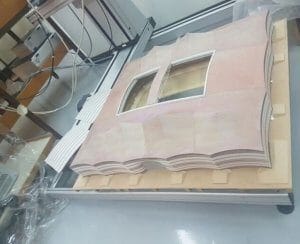

(Image © www.sc.qa)
Contents
Stadium models from the 3D printer should ensure a better climate in the stadiums at the 2022 World Cup in Qatar
On the occasion of the opening of the Soccer World Cup in Russia this Thursday, we would like to use an example to show you the relevance of the Soccer World Cup in the context of a 3D printing blog.
For this purpose, let’s look 4 years into the future, to the year 2022 and the football World Cup planned for that year in Qatar.
The climate as a challenge for a World Cup in the desert
The real challenge in being able to hold a major sporting event under the extreme climatic conditions that prevail in a desert country like Qatar is to ensure a tolerable climate in the stadiums for everyone involved. To this end, a team of researchers from Qatar University College of Engineering is using complex models to test the effects of weather conditions on models of the stadiums. The aim of this work is to optimize the stadium design from a climatic point of view.
The models used for this (example: see picture above) were produced on a 3D printer using FDM technology.
Thermal tests in the wind tunnel
The stadium models from the 3D printer are now subjected to tests in a wind tunnel with regard to their aerodynamics and thermal reaction. Using state-of-the-art lasers, they record precise data on the air currents sweeping over the stadium models in the wind tunnel. Using analysis software, this collected data is processed and converted into measurements that should help the scientists and architects involved to optimize the design of the football stadiums according to the desert conditions.
Above all, the temperature of the seats and the “perspiration factor” of the spectators were tested, as well as the resulting reasonable number of spectators per stadium.
In addition, the aim of the investigations is also to minimize the amount of steel in building roof structures in order to reduce both costs and environmental impact.
Read more about the emphasis on 3D printing for architectural projects in our blog.
To the blog overview
